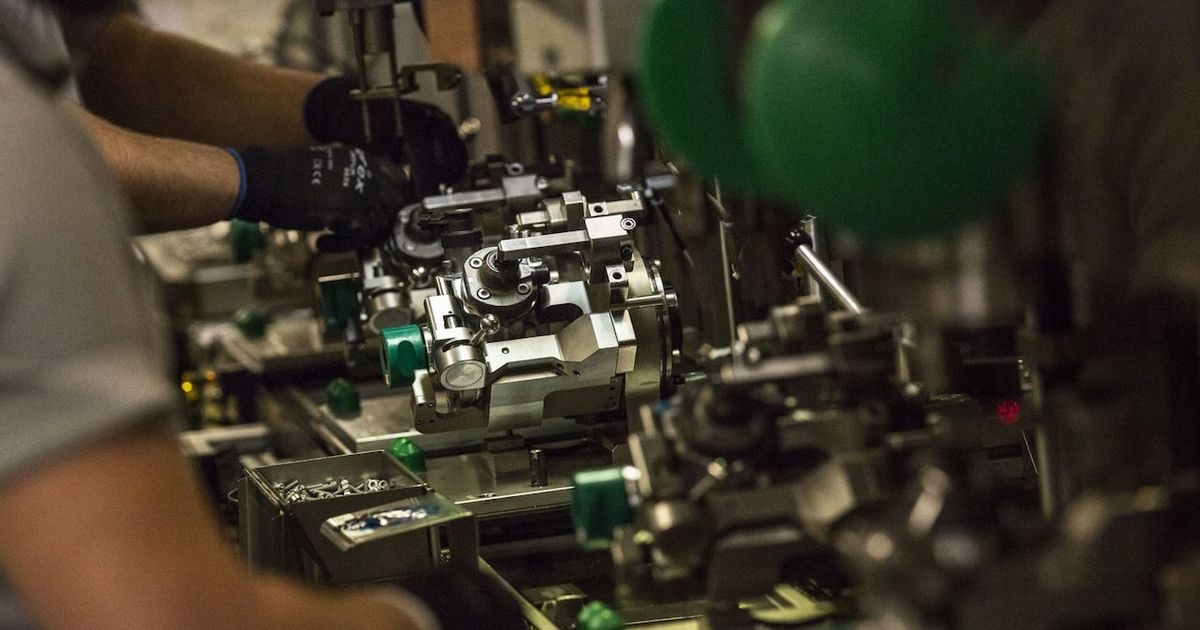
Parts shortages and higher commodity prices are putting a financial squeeze on Tier 2 and Tier 3 suppliers, in some cases forcing them to go to their Tier 1 customers to renegotiate pricing or ask for a cash infusion.
The third option: Go bankrupt.
Pat D’Eramo, CEO of Canadian Tier 1 supplier Martinrea International, has had a number of lower-tier suppliers ask his company to renegotiate their contracts, he says.
That maneuver, occurring around the industry, is putting even more financial pressure on Tier 1 companies as they deal with pricing pressures of their own, he said.
“We negotiate and we’re paying the difference,” D’Eramo said. “Most of the supply base is doing the same thing. We’re trying to work with our customers to make adjustments that are in line with the adjustments that we make with Tier 2s. That’s the fair way to do it.”
D’Eramo told an audience at an industry conference this month that several of his smaller European subsuppliers have recently gone bankrupt.
“I think every week we have a bankrupt subsupplier in Europe,” he said.
Suppliers are facing financial difficulties even as automakers report high profit margins and lower debt levels. Consulting firm AlixPartners estimates that automakers as a group reduced net debt by $103 billion, or about 11 percent, between 2020 and 2021, while suppliers’ debt remained at “near-record” levels.
Amid the supply chain challenges and periodic assembly plant shutdowns of the last two years, many smaller suppliers have found it difficult to produce and deliver their product at a sufficient profit.
Parts and materials shortages have created a “start-and-stop effect” in the supply chain that is “catastrophic” for smaller firms, said Arun Kumar, a managing director in AlixPartners’ automotive and industrial practice.
“The start-and-stop is driving up significant costs because you’re contractually obligated to supply,” Kumar told Automotive News. “But if you have two weeks of no production and you start again, you can’t just let go of people and hire them back. You end up carrying those people through those downtimes, which adds a lot more costs to it because you’re not getting those revenues from the Tier 1 suppliers.”
As a result, Tier 2 and Tier 3 executives are being forced to take a hard look at their product programs to see which remain profitable and figure out which of its Tier 1 customers are worth continuing to do business with.
Tier 2 companies “should look into their portfolio and see which product programs are profitable, and then take a strong view if they want to continue with some customers that are unwilling to give any kind of price break, or if those contracts are unprofitable,” Kumar said. “They should work with Tier 1s and OEMs to reduce that burden.”
The latest sign of supplier trouble came Aug. 8, when vehicle acoustic components supplier Gissing North America, of Bingham Farms, Mich., filed for Chapter 11 bankruptcy protection with up to $100 million in liabilities.
Gissing, a subsidiary of China’s Wuxi Gissing Auto Parts Co., has approximately 600 unsecured creditors that are owed approximately $27.5 million, according to court documents in the bankruptcy case.
“Significant price increases for all input costs — material, labor, transportation and burden — have presented unprecedented challenges to Debtors and auto suppliers across North America,” the company said in the documents.
Customers including Tesla and General Motors have agreed to keep Gissing afloat until it can be sold.
“At the end of the day, it’s the responsibility of the Tier 1s to make sure that the parts are being delivered,” Kumar said. “So if the Tier 2 says they can’t deliver the part because they don’t have the cash flow to support it, it’s the responsibility of the Tier 1s to make sure they are pumping some cash into the Tier 2s.
“The Tier 1s are kind of stuck in a difficult spot.”
Executives at major automakers said it is critical that suppliers remain transparent with them about potential disruptions they see or financial difficulties they face.
“We have a number of Tier 1 suppliers that are struggling from a financial standpoint,” said Robert Young, group vice president for purchasing and supplier development at Toyota Motor North America. “It’s better to get in front of this. Please don’t come to us and say, ‘We’re not going to make payroll next week.’ ”
Young said Toyota works to maintain a “good level of transparency” with its suppliers and is open to restructuring contracts in certain cases.
“Sometimes there is re-pricing that’s necessary, but if we’re going to accept re-pricing, we expect that suppliers are going to correct their challenges and over time get back to maybe where they were before,” he said.
Kumar said suppliers are likely to continue feeling financial pressure until supply and demand are back in alignment. That could happen as the worldwide shortage of microchips is expected to begin easing later this year and early next year.
But that will take time, and suppliers will still have to grapple with electrification and the impact increased electric vehicle production will have on the supply chain. AlixPartners forecasts the transition from internal combustion engine vehicles to EVs will be another financial pill to swallow for parts companies, costing the industry about $70 billion through 2030 as the supply base restructures.
“If I’m a Tier 1 supplier or OEM, I need to be constantly watching for the stress level in the supply base as we see more and more electrification,” Kumar said. “All these things are going to be driving costs in the system.”